Unsettled Objects - an exhibition considering artworks as active agents of an inclusive collective imagination
An interview with Dr. Omar Kholeif, Director of Collections and Senior Curator at Sharjah Art Foundation
Unsettled Objects is a show that draws on work from the Sharjah Art Foundation Collection, and holds at its core an interrogation of exhibition making by considering what it means to decolonise the imagination. SOUTH SOUTH interviewed the exhibition’s curator, Dr. Omar Kholeif, to tease out the thematic threads of this interrogation and unpack his curatorial gestures.
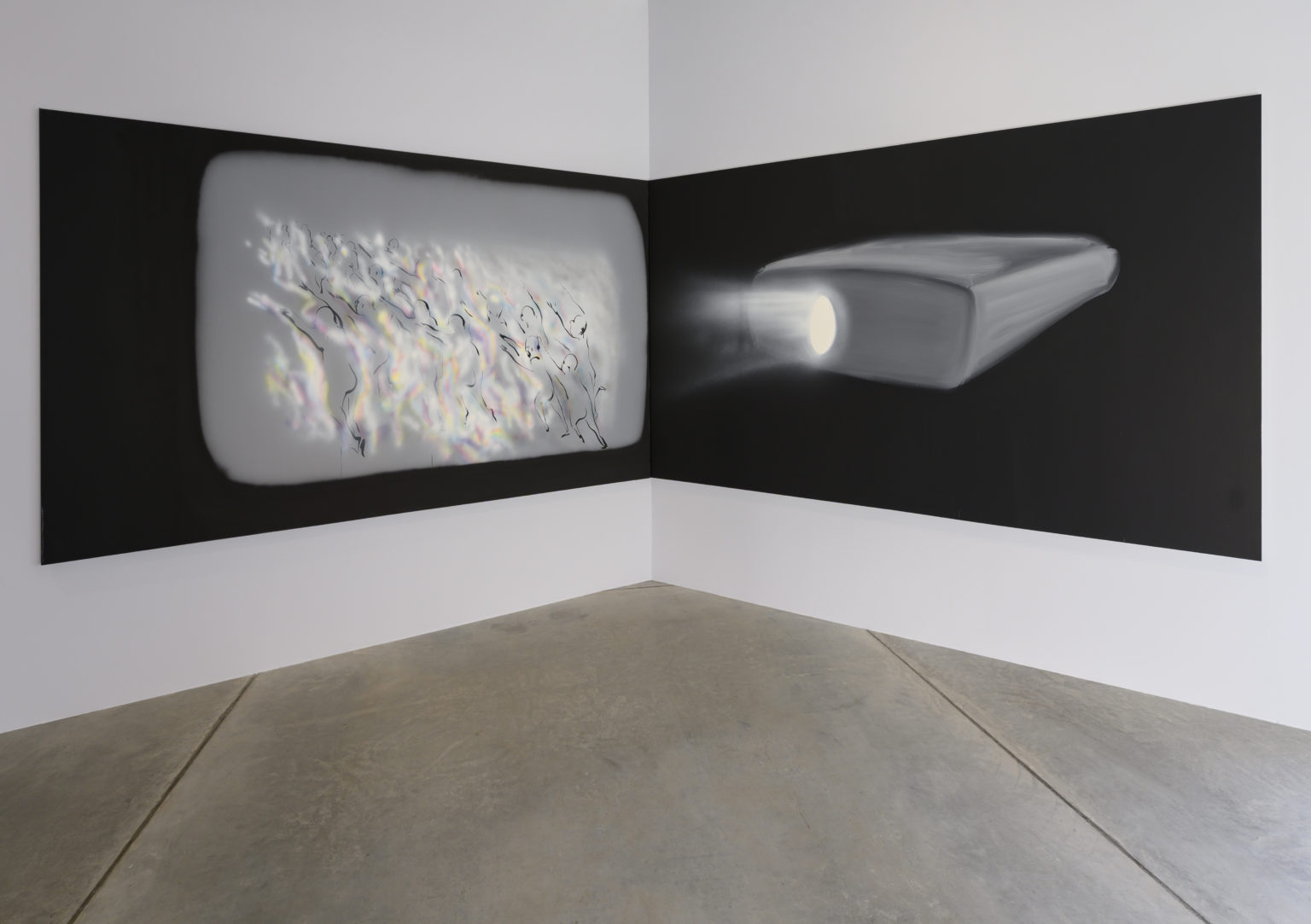
Tala Madani, Corner Projection (Panic), 2019. Oil on linen; Two parts, each 182.9 x 365.8 x 3.8cm. Photo: Sharjah Art Foundation
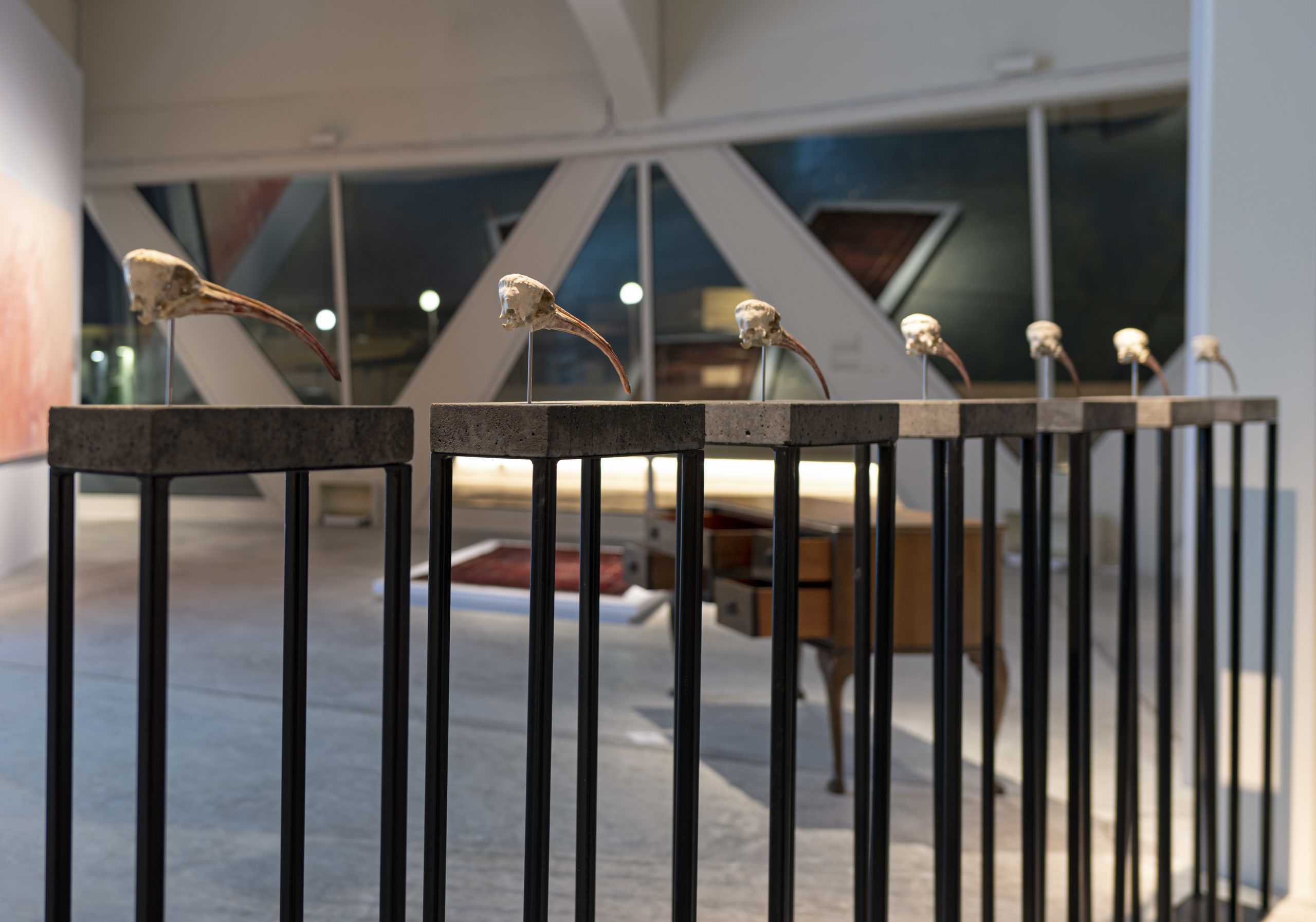
Hrair Sarkissian, Final Flight, 2018 – 2019. 7 Hand painted resin/bone casts of a 3D – model skull; 26 x 6 x 5 cm each (placed on metal plinths with microcement base). Installation view: Unsettled Objects, Sharjah Art Foundation, 2021. Photo: Sharjah Art Foundation
SOUTH SOUTH (SS): Could you please share a bit about your own practice and overview of your journey within the art world?
Dr. Omar Kholeif (OK): Thank you for the question. For a start, I should clarify that I do not use the term ‘art world’ even if I do like some of the theories articulated by Howard S. Becker in relation to collective affinities. The suggestion of an art world in this day and age is a little too governed by market forces, and presupposes a myopic sphere or vacuum that is at odds with how my career came to be. It was an unusual start, I studied Political Science and Film and began my career at a young age as a journalist and subsequently a documentary filmmaker. Although I still traverse these spheres, I felt that this world was too hermetic and over prescribed. During my early 20s, I decided that I was fundamentally an artist who wanted to manifest my work in writing and exhibition making; I did not even know at the time what the word curator meant; I knew of the old-world term of Keeper. This profession was a freer form of expression that allowed me to speak directly with artists, architects, designers, technologists and scientists who all inspired me—the spaces that museums offered were capable of eschewing the neat boundaries of conventional media such as television and radio, and allowed for inter-disciplinary dialogue. This was pivotal for me because I began my study in the UK, after having lived in different parts of the world that we have now come to refer to as ‘the global south’. I felt a need to invoke what Walter Benjamin, and later, Okwui Enwezor referred to as ‘constellations’, which I see as mutating, free-form collectives of ‘idea makers’ who work across great expanses and in different social, political, contexts but who share approaches, methodologies or affinities. I studied with Professor Jean Fisher, who was among everyone, my closest mentor and supported me all the way through my doctoral work. She engaged me with concepts of what Lorraine O’Grady refers to as ‘political blackness’, post-colonial and critical race theory. I was initially schooled in the Black British Art Movement, in African art and ultimately in the arts of West and South Asia. At this juncture and cross-section, I became rather obsessed with how emerging technologies were shifting distribution platforms and aesthetics. My first full Curator role was at FACT, Foundation for Art and Creative Technology in Liverpool. The journey from there took me to Manchester, London, Venice, Cyrus, Chicago and Sharjah.
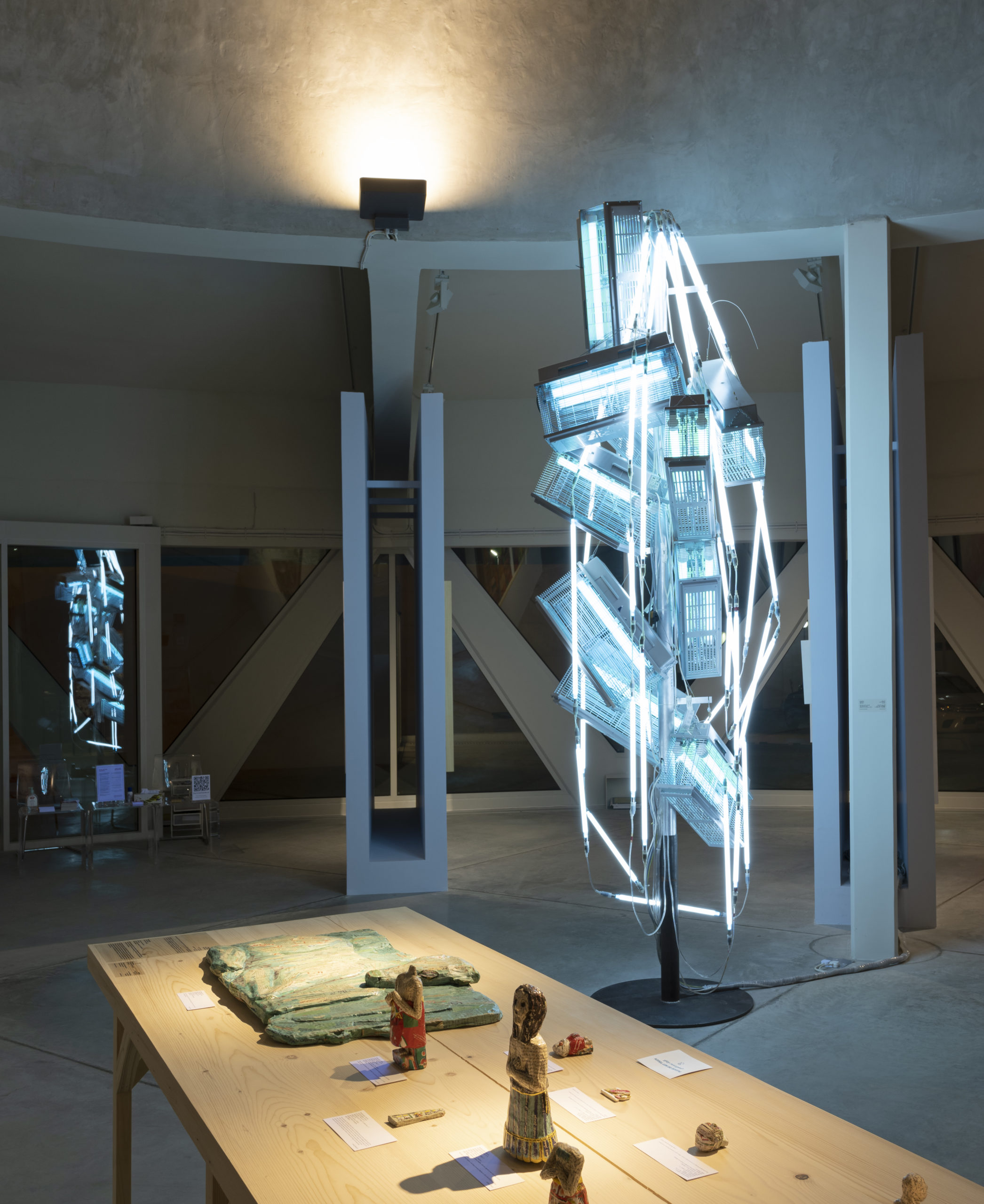
Installation view: Unsettled Objects, Sharjah Art Foundation, 2021. Photo: Sharjah Art Foundation
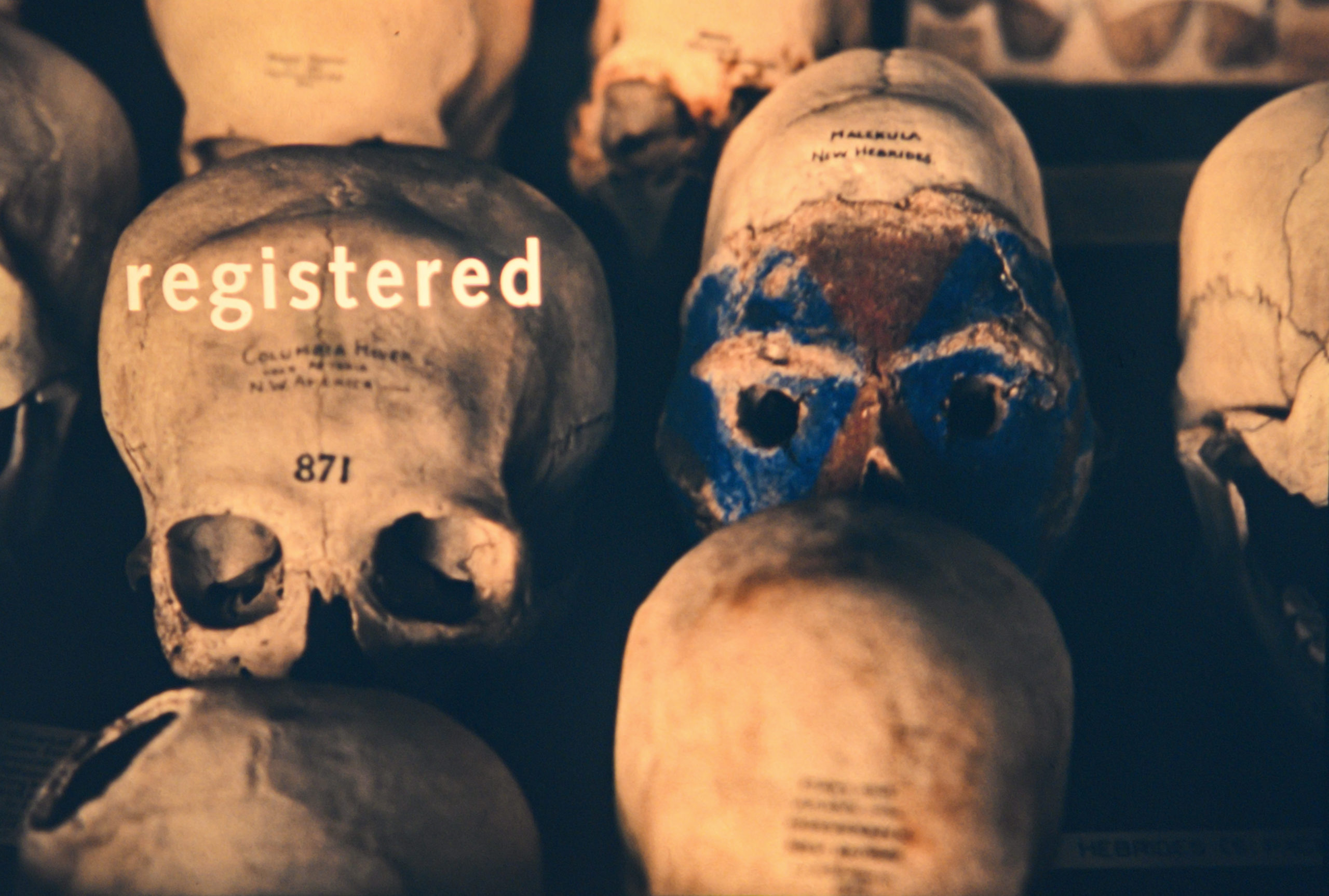
Lothar Baumgarten, Unsettled Objects, 1968 – 1969. Single – slide projection, 81 35mm images, colour; 14 minutes 50 seconds, dimensions variable. Installation view: Unsettled Objects, Sharjah Art Foundation, 2021. Photo: Sharjah Art Foundation
If one could describe the Collection in one word
it is to say that it is ‘situated’ –
it belongs to and of Sharjah
and emerges from its history as a site of trade
nd movement for multiple groups over the years.
SS: Could you please share more about the Sharjah Art Foundation Collection and its importance in establishing art history narratives from an East/East and South/South perspective?
OK: The Sharjah Art Foundation Collection emerged from works commissioned through the Sharjah Biennial. The Sharjah Biennial, under Hoor Al Qasimi’s directorship, was one of the first events that I attended where I witnessed such a diverse array of artists responding to a context that was wholly different to former industrial or touristic sites of the cities I had visited, such as Liverpool and Glasgow, or Venice, for example. In a sense, it is a unique time capsule of the developing artistic practices that emerged in the 1990s across the so-called Arab world, as well as in other parts of the South and East. Over time, Sharjah Art Foundation (SAF) was established as an organisation. In this guise, it began a year-round programme, presenting exhibitions from historically under-represented movements and groups such as the Khartoum School, for example; these shows too became vessels and nodes to feed the burgeoning Collection, which I believe has been at the core of Hoor Al Qasimi’s vision for Sharjah Art Foundation—to create a publicly accessible Collection that speaks to and of the region. In the last decade, a Collection roadmap strategy was developed to also include artistic figures and collectives whose work SAF felt was imperative to the evolving narrative of an inter-connected world that we live in. The Collection now holds works from the 1920s to the present, of artists bound by solidarity in the forms and materials that they use, the content that they choose to discuss, as well affinities developed through similar lived experience. If one could describe the Collection in one word it is to say that it is ‘situated’ – it belongs to and of Sharjah and emerges from its history as a site of trade and movement for multiple groups over the years.
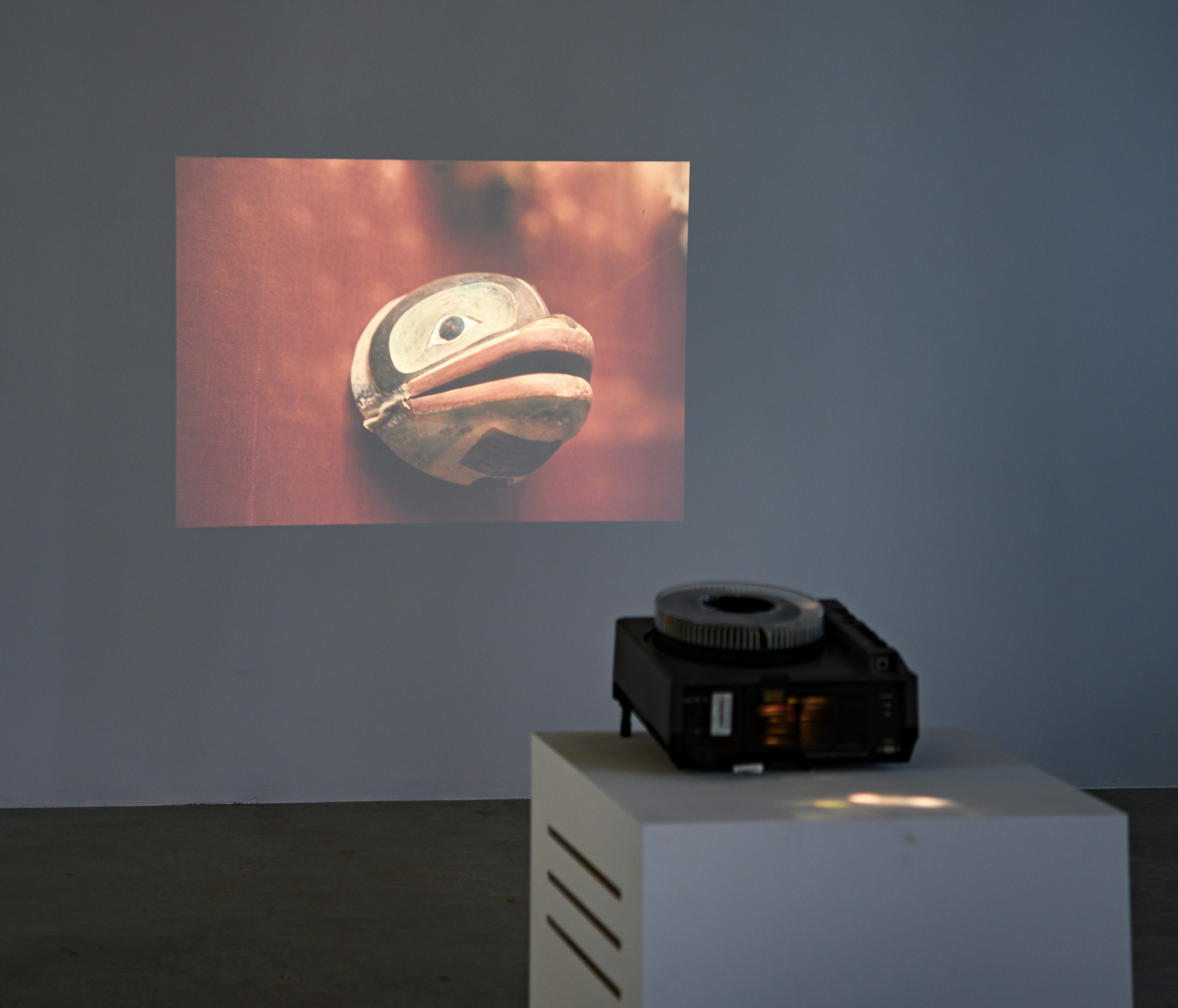
Lothar Baumgarten, Unsettled Objects, 1968 – 1969. Single – slide projection, 81 35mm images, colour; 14 minutes 50 seconds, dimensions variable. Installation view: Unsettled Objects, Sharjah Art Foundation, 2021. Photo: Sharjah Art Foundation
SS: How would you describe your curatorial approach for Unsettled Objects?
OK: The starting point was an acquisition of Lothar Baumgarten’s Unsettled Objects (1968-9), which I had seen at a young age. It is a slide carousel projection of objects in the Pitt Rivers Museum, which to me, have always looked hollowed of life. Baumgarten’s interplay of text and image encourages the viewer to consider points of origin. belonging and restitution. I put this together when the world was in lockdown and I considered what it meant for these subjects/objects to be perennially in lockdown, away from their native lands, sites unseen? That was the starting point. From then on, I began to consider a choice of venue. The recently restored Flying Saucer is a carousel too; it was perfect to elucidate this. I began to think about what would a carousel of objects that exist between sleep and dream, look like? Could they encourage us to ask questions about the ontology of the image? Of how the Euro-centric narratives that have become entrenched in history, influence how one receives an image? How could an architecture, an interplay of situated gestures between artworks, push back against these mythologies and create a different form of visuality?
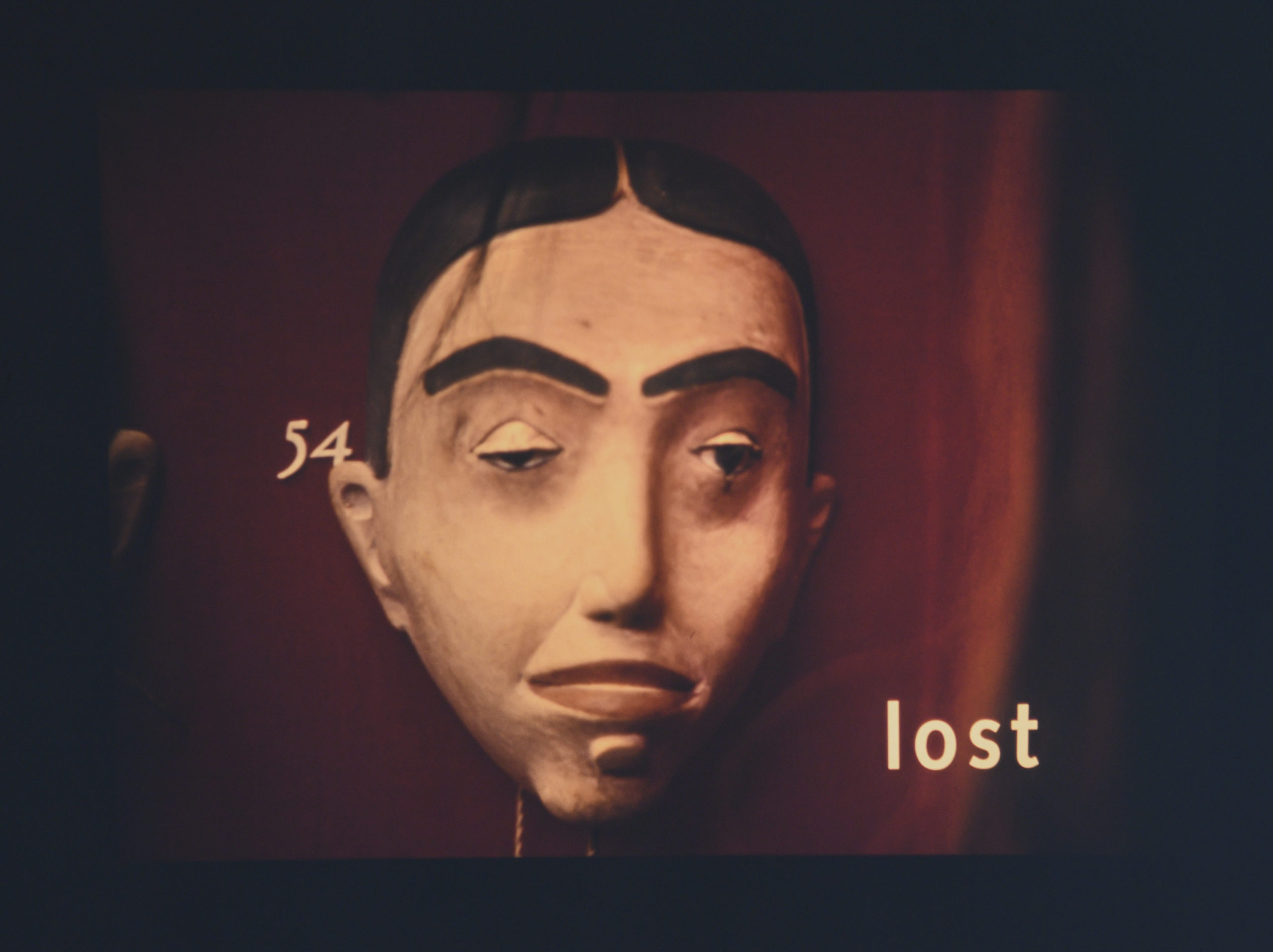
Lothar Baumgarten, Unsettled Objects, 1968 – 1969. Single – slide projection, 81 35mm images, colour; 14 minutes 50 seconds, dimensions variable. Installation view: Unsettled Objects, Sharjah Art Foundation, 2021. Photo: Sharjah Art Foundation
SS: As you mentioned, the artwork Unsettled Objects (1968–9) by the late conceptual artist Lothar Baumgarten lay the foundation for this show. What drew you to this work and how did it become the catalyst for the ideas that are explored in this exhibition?
OK: I first encountered the work for the first time in 1997 and it haunted me. Perhaps because I studied and practiced the act of making cinema, I believe in the spectral aspects of the ‘haunting’ image that sediments and alters the mechanisms through and by which we see ourselves and others. The work was acquired before the global lockdown. I had met Lothar two years before he passed away and had inquired if one day I could acquire this work for a Collection in the Arab World or in Africa, where I felt it belonged and could create a different form of dialogue. After his passing, Hoor Al Qasimi and I went through the motions to bring this into the SAF Collection. Now it was in storage haunting me to come to life and thus it began. The time had come to open up to a new panoply; to put this work in conversation with artworks, which engage the very subjects and experiences articulated in Unsettled Objects (1968-9) itself.
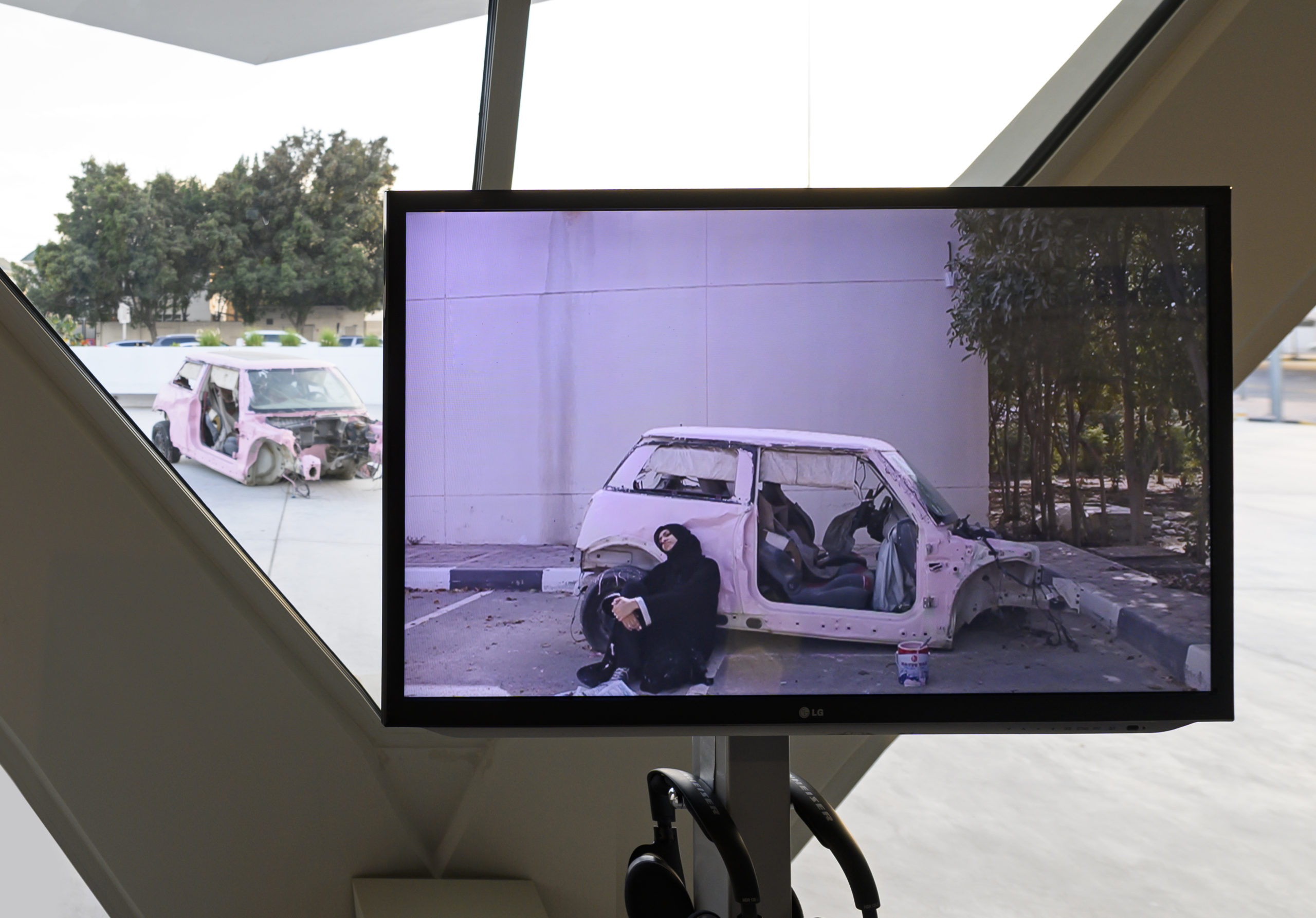
Sarah Abu Abdallah, Saudi Automobile, 2011.Colour video with sound, car and pink paint; 10-minute single channel HD video on loop. Installation view: Unsettled Objects, Sharjah Art Foundation, 2021. Reproduced by Sharjah Art Foundation. Photo: Sharjah Art Foundation
SS: This exhibition attempts to investigate what you argue is the possibility of ‘rethinking’ the colonial imagination. Could you unpack your thinking around this further?
OK: There are loose threads that bind together the artworks in the exhibition: Intimacies—between objects and subjects within the artworks; the evolution of forms in contested geo-political landscapes; the relationship between myth-making and perceived truth; the concept of mining the archaeology of lived experience and the multifarious ways that artists have chosen to express these across three generations. These concepts collectively are anchored in a panoptical constellation that wraps around the form of the Flying Saucer, fostering a dialogue that is devoid of any sense of hierarchy. The works are not chronologically or geographically ordered as would be in the ethnographic setting of Baumgarten’s artwork. Rather, they are thematically posited to create a way of looking that asks the viewer to consider these subjects not as ‘subaltern’, but instead as active agents of an inclusive collective imagination—one that exists outside of the bounds of colonial imagination.
SS: The artworks in the show are from artists who all have a relationship with the Foundation and come from varying geopolitical contexts. How did this play into your framework for the show?
OK: Almost every artwork in the Sharjah Art Foundation Collection is from an artist who holds some form of deep resonance and connection with the Foundation. Some artists have worked with SAF for many years, others more recently, so this is an implicit and unique facet of working with these works from this Collection. There is a sense of ‘knowing’ between the Foundation staff and these artists; of mutual trust and respect. This allows one the space to be playful and to experiment.
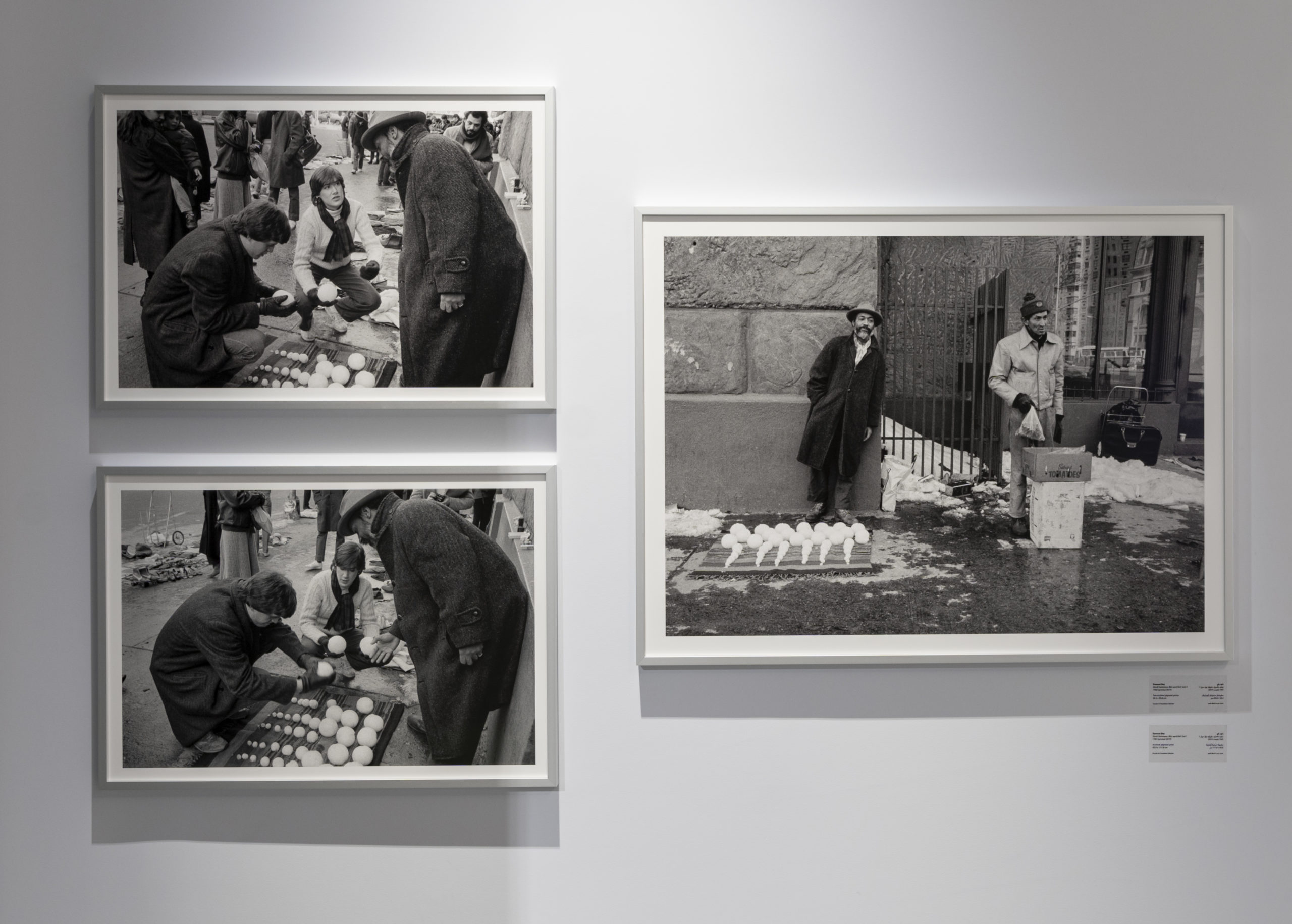
Dawoud Bey, various works, 1983 (printed 2019).Archival pigment print; dimensions variable. Installation view: Unsettled Objects, Sharjah Art Foundation, 2021.Photo: Sharjah Art Foundation
SS: You also make specific reference to the concept of ‘wintering’ in your exhibition text. Could you please unpack this further and share more about how it connects to your thoughts for the show?
OK The notion of ‘wintering’ is about an interiority: it is an essential time of retreat and reflection, but also of withdrawal, a sanctioned form of quiet. This occurs for individuals in certain parts of the world, i.e. the Western world, during the winter months of December to February. That said, many countries in the so-called ‘global south’ do not experience this same temporal order; their winters occur at different times; or they may not have winters at all. Thus, I felt the concept was a useful one to think of interior thought, but it was clearly defined in literature and science from a largely Western perspective. That said, as this exhibition was constructed, the whole world was shuttered off: Isolated, collectively indoors, one could argue that there was a phenomenological sense of affinity amongst great expanses in the same temporal order that had not necessarily occurred in the same fashion before.
SS: The exhibition is also situated within discourse that considers identity politics from entry points, including race, ethnicity, restitution, and spaces of knowledge production. Could you share more about the significance of this and how these debates filter through into the exhibition itself?
OK: Race, ethnicity, restitution and knowledge production are all inherently part of the formation of this exhibit and undergird almost all of the works to some degree. Yet, I did not parse these specific aspects out and define them bluntly because I felt that it would defeat the very purpose at hand here, which is to create a theatrical presentation of emotions that arise out of the collective resonances and dissonances of artistic practices and experiences. In a sense, I have come to a position theoretically where I am interrogating one fundamental question: What does a celebratory visuality look like? One that encompasses diverse cross-sections of society, across race, class and gender? What does it mean to let the work of art play its affective role with the audience and to evade the sense of the ‘fight’ and struggle at every turn? I believe the struggle is in getting these voices out into the world; that can be my job; but the works, they live and breathe to speak for themselves.
SS: Are there any particular works that become anchor points for the thematic reflections present in the exhibition?
OK: I feel deferential about singling works out as this is about the interplay of emotions created by visual art and architecture; between space and body; mind and matter. There are some particularly special moments, not that one is more significant than the other, because I truly worked with the SAF team to foster an experience where the audience could bring forth their multiple subjectivities. A few beautiful examples occur, such as when we see Lubaina Himid’s recent paintings, which are about a form of intensity, and the impossibility of togetherness, juxtaposed against Mona Hatoum’s Baluchy (Burgundy) (2016) that takes a more holistic consideration of the body into view through an act of mapping. Seeing Hrair Sarkissian and Michael Rakowitz’s divergent archaeologic relics crisscross against each other with Astrid Klein’s luminescent Flycatcher III (1987-1991) in the backdrop, conjures a whole suite of metaphors around the contingency afforded to the displaced subject. Marcos Grigorian’s renderings of earth juxtaposed against Huma Bhabha’s Sci-Fi relics constructed from quotidian materials, fashion a conversation across a huge geographic expanse and time. Rasheed Araeen’s History Painting (1987-1994), one of many of the artist’s works on view, anchor us in the lexicon for and of representation. While at night, Prem Sahib’s intervention, Liquid Gold (2019-2021), especially re-conceived for this exhibit, lights up the Flying Saucer, refusing to allow the objects inside the closed gallery, to ever go to sleep as they would have in Baumgarten’s Unsettled Objects. The material qualities of gold, which here is represented through light, speaks to our sense of value, commodity and spectacle, leaving us the question: How do we value what we see?
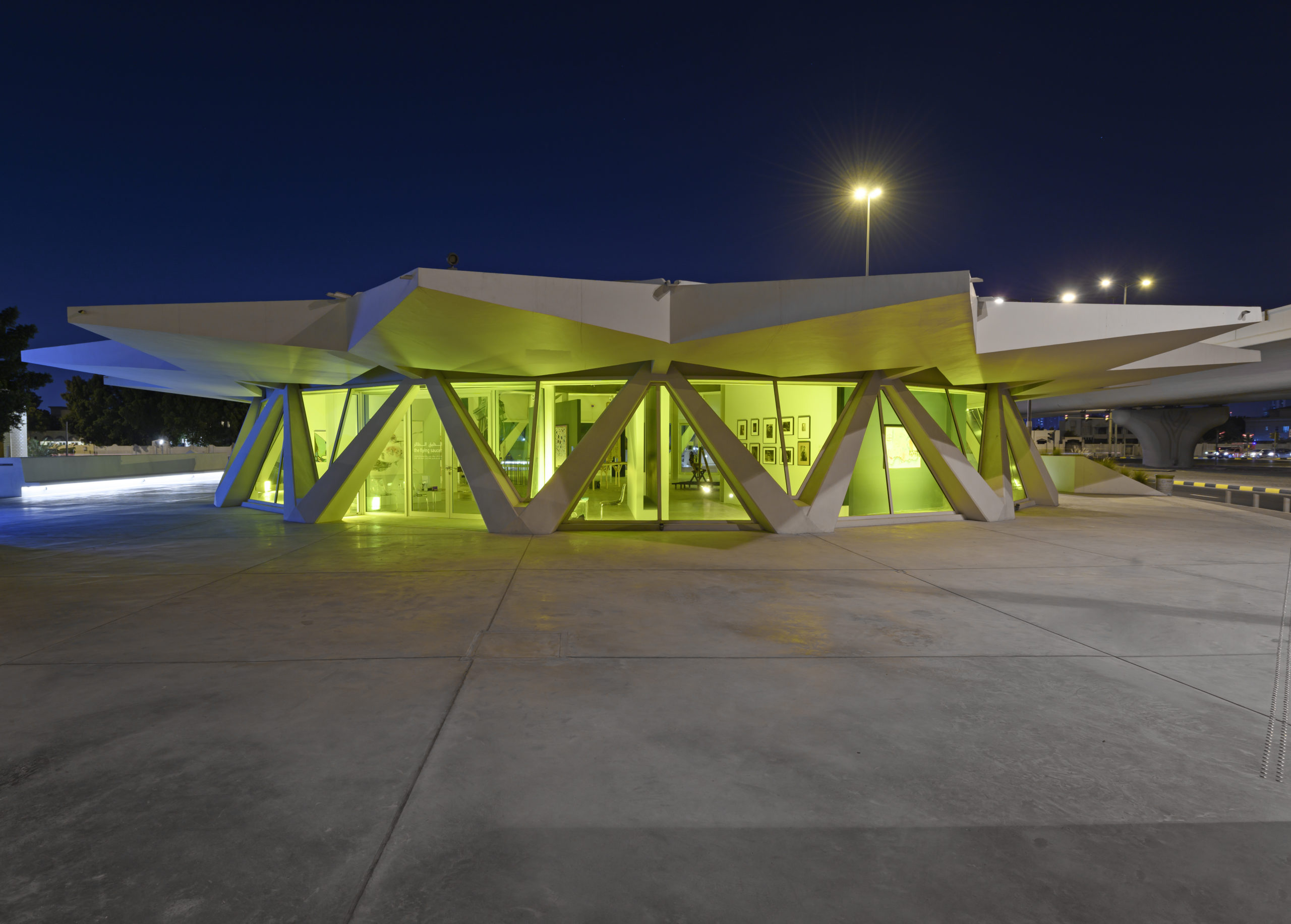
Prem Sahib, Liquid Gold, 2016–ongoing. Intermittent gold light on windows; dimensions variable. Installation view: Unsettled Objects, Sharjah Art Foundation, 2021. Photo: Sharjah Art Foundation
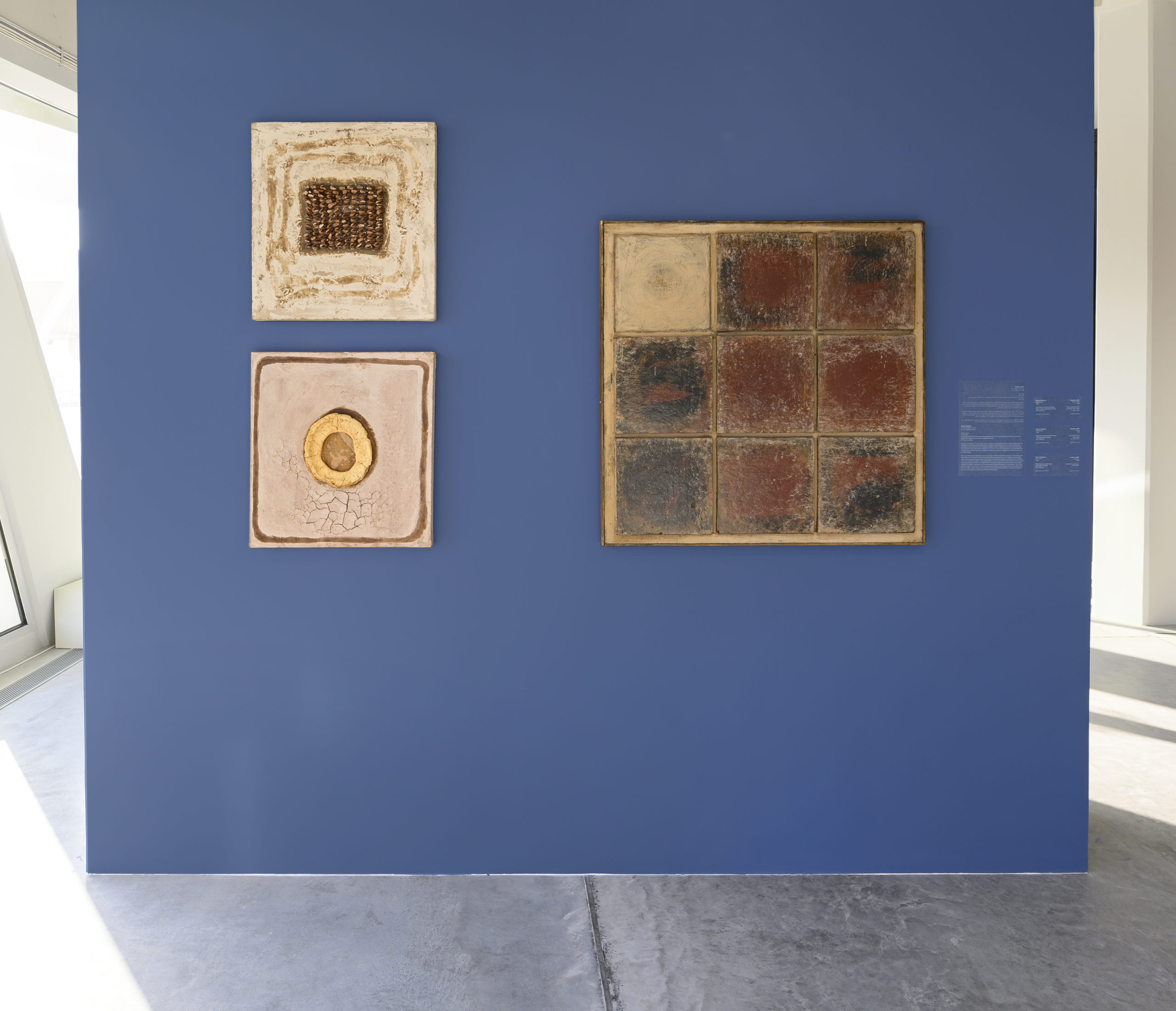
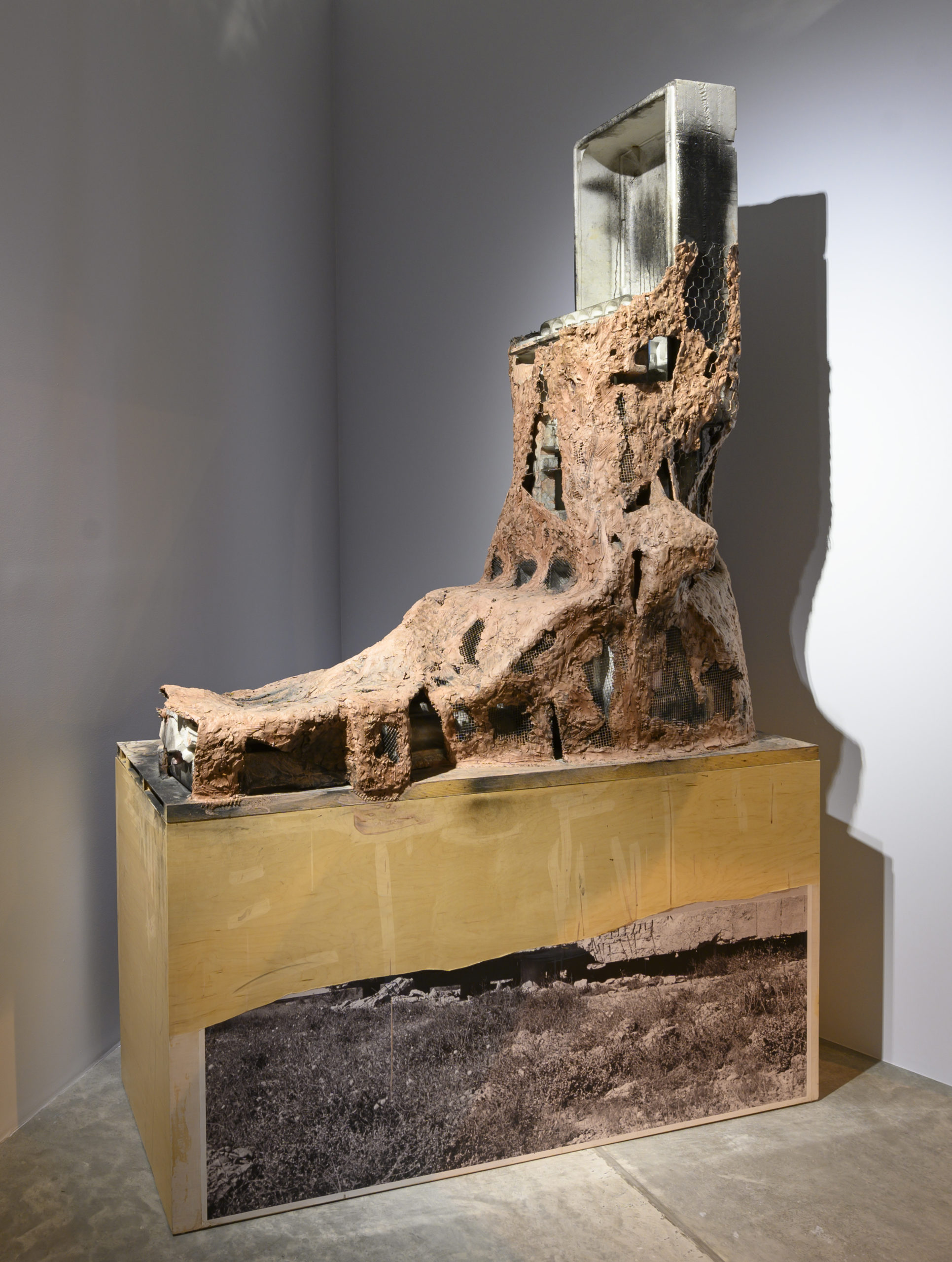
Top: Marcos Grigorian, various works, 1964–1968. Bread and mixed media soil compound, pistachios adhered to mixed media soil compound and acrylic and sealant on 8 wooden tiles on earth compound on burlap; dimensions variable. Installation view: Unsettled Objects, Sharjah Art Foundation, 2021. Photo: Sharjah Art Foundation
Bottom: Huma Bhabha, Jhukarjodaro, 2011. Clay, wire, wood, styrofoam, black and white photograph, colour photograph, paper, acrylic paint, leaves, feather;213.7 x 58.7 x239.4 cm. Photo: Sharjah Art Foundation
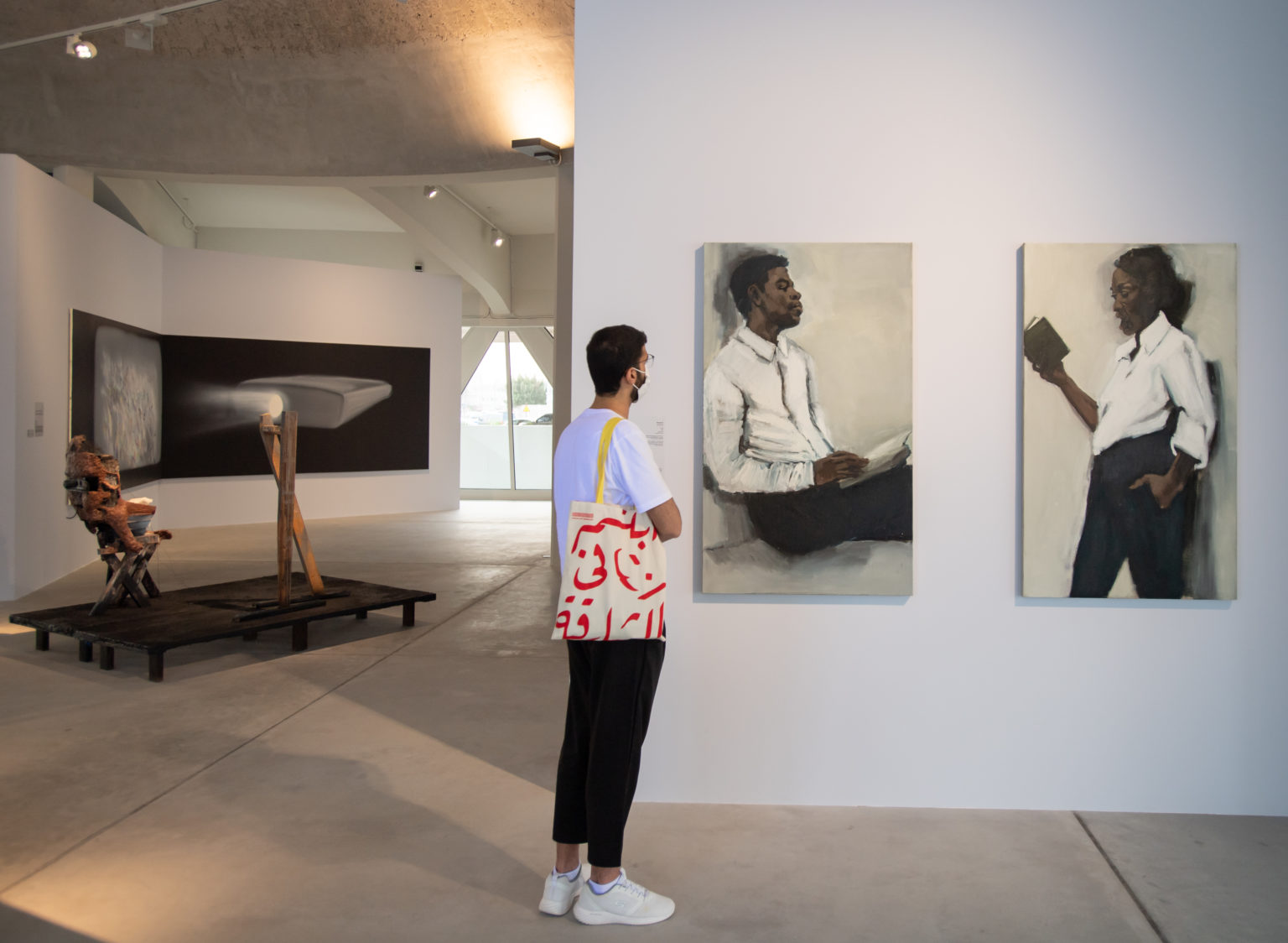
Installation view: Unsettled Objects, Sharjah Art Foundation, 2021. Photo: Sharjah Art Foundation
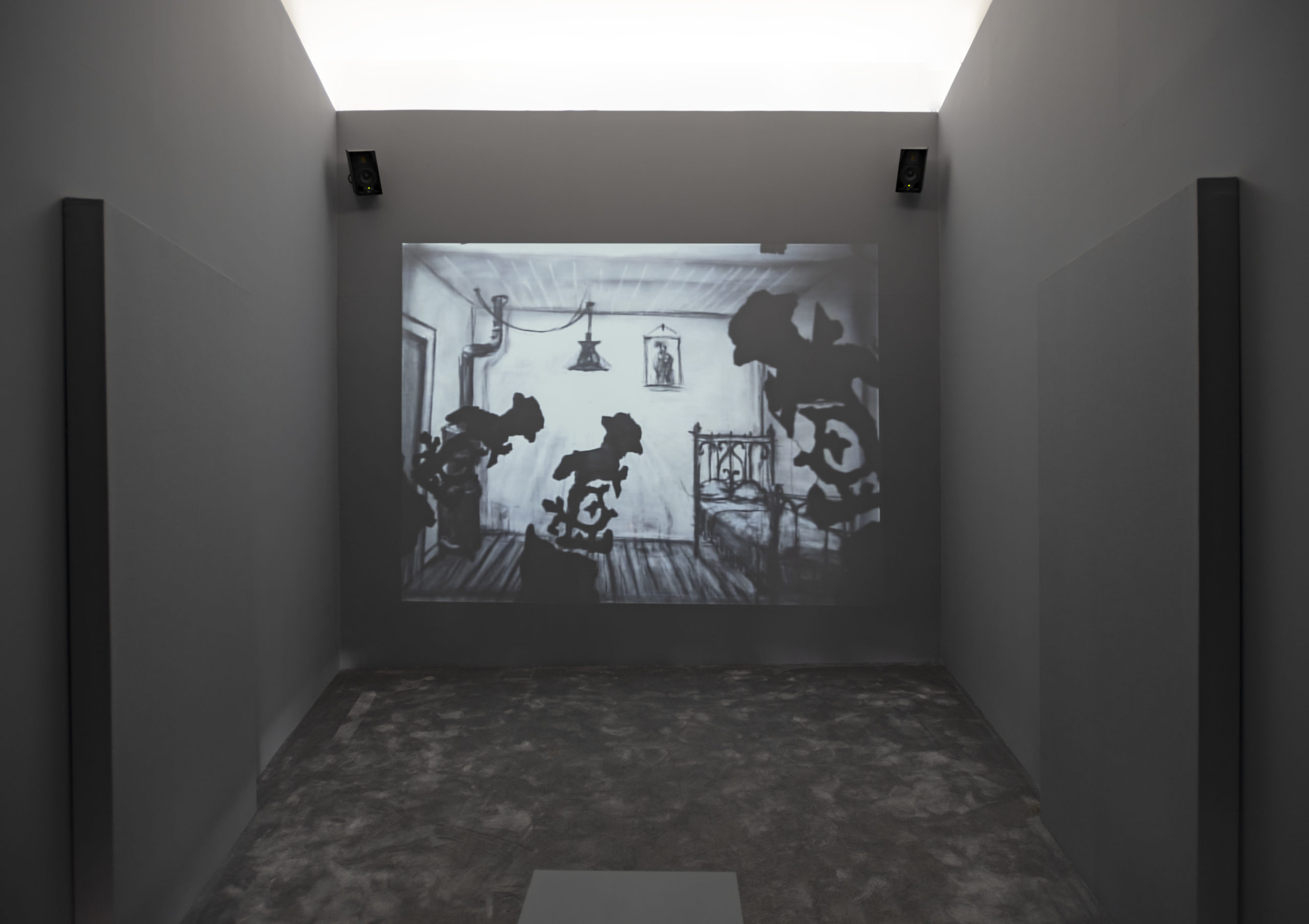
William Kentridge, Zeno Writing,2002.35mm, 16mm film and mini DV transferred to Betacam and DVD;12 minutes. Installation view: Unsettled Objects, Sharjah Art Foundation, 2021. Photo: Sharjah Art Foundation
CREDITS
Images courtesy of the Sharjah Art Foundation.
Unsettled Objects
12 March–15 June 2021
The Flying Saucer, Dasman
Sharjah Art Foundation, Sharjah,
United Arab Emirates
